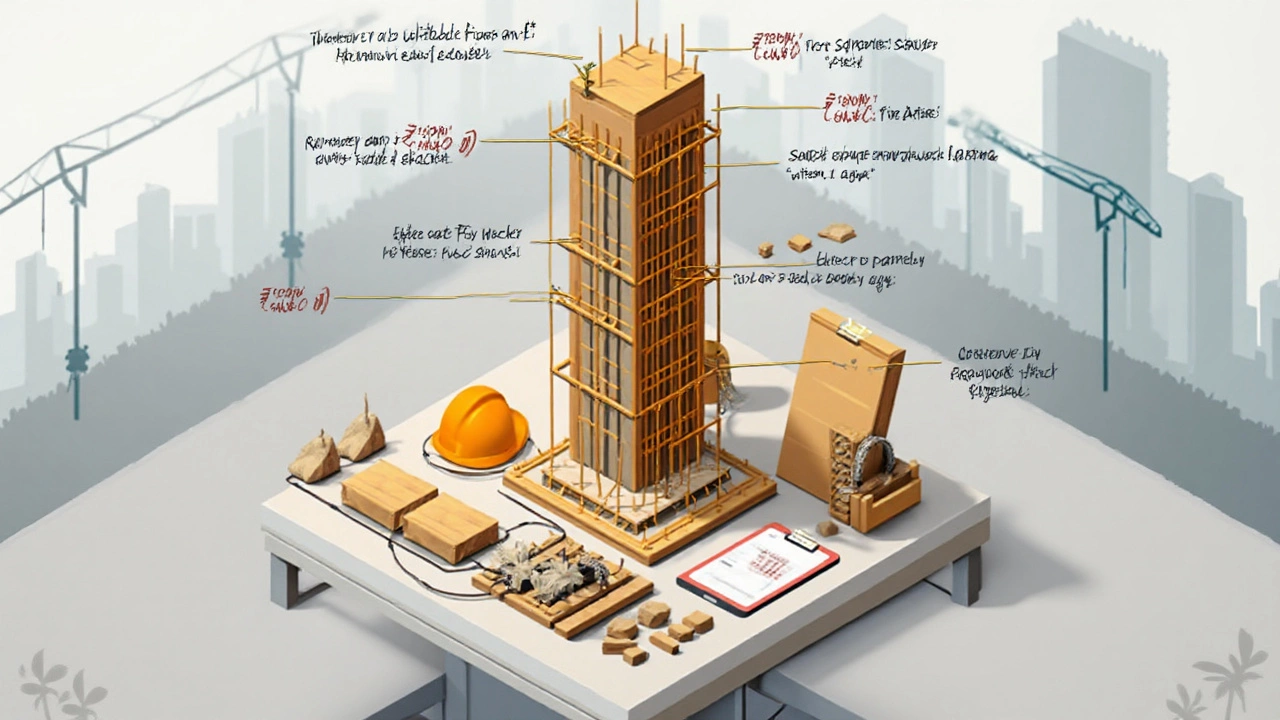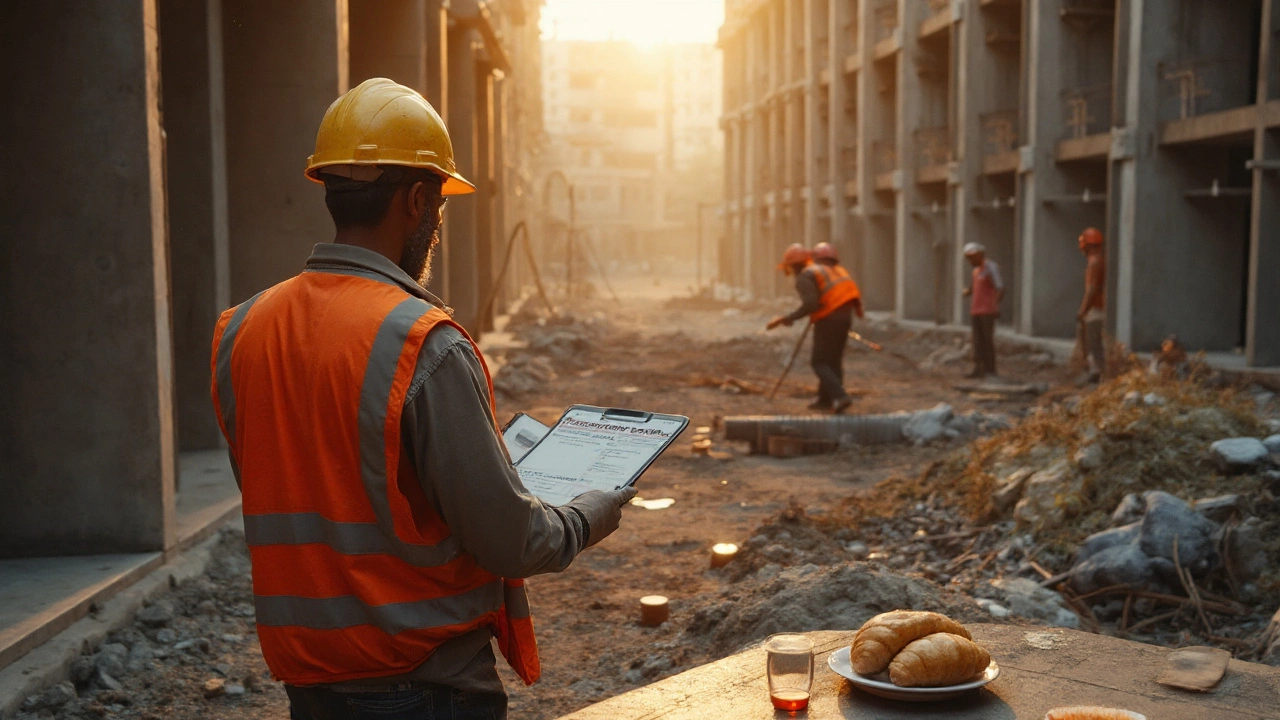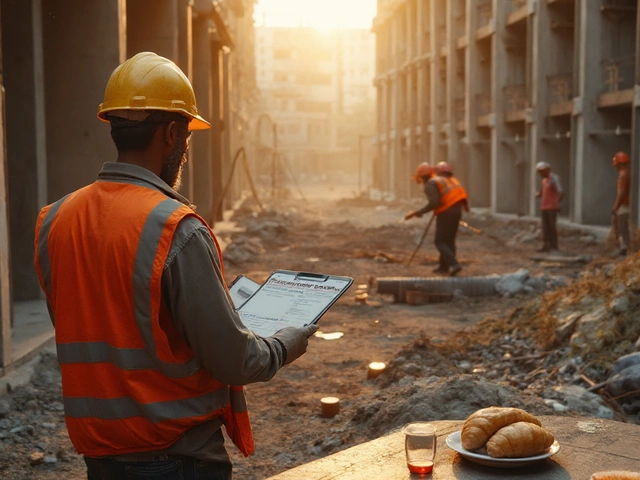If you came here to get a straight answer to “How much does a pillar cost in India?”, you’re probably planning or auditing a build and need real numbers you can act on today. Short answer: a single ground-floor RCC pillar (10 ft high) in 2025 typically falls between ₹7,500 and ₹22,000 depending on size, steel, grade of concrete, city, and how efficiently you pour. I’m in Mumbai and I price columns every month-below I’ll show realistic ranges, how to estimate your own with a simple formula, and where money quietly leaks if you’re not careful. If you need just one line: budgeting ₹10k-₹15k per pillar for a standard home column keeps most people safe in metros.
TL;DR: 2025 Pillar Cost in India
Quick takeaways you can use right now.
- Typical 10 ft RCC pillar (ground floor): ₹7,500-₹22,000 each. Small 9"x9" pillars sit near the low end; 12"x12" or higher steel content pushes to the top end.
- Fast metro guide (inclusive, reasonably efficient pour): 9"x9" ≈ ₹7.5k-₹10k, 9"x12" ≈ ₹9.5k-₹15k, 12"x12" ≈ ₹12k-₹20k.
- Biggest drivers: steel weight (2%-3.5% by volume), concrete grade (M20 vs M25), shuttering area, and logistics (RMC pump share).
- Rule of thumb: per m³ of column volume, materials + labour generally land between ₹16k and ₹26k in metros (steel-heavy columns skew higher).
- Minimums that matter: IS 456 requires at least M20 for RCC; seismic detailing as per IS 13920 can increase steel and ties-plan budget accordingly.
What Really Drives Pillar Cost (And How to Control It)
When people ask for a number per pillar, they expect a fixed rate. Reality: a pillar is a custom item. The same footprint can cost very differently based on design and execution. Here’s the breakdown I see on actual sites in Mumbai and Tier-2 cities.
- Size and height. Volume = width × depth × height. A 12"x12" (300×300 mm) column has ~70% more concrete than a 9"x9" column at the same height. Taller floors ramp shuttering area and labour.
- Steel percentage. For small homes, columns usually sit around 2%-3% steel by volume (varies with storeys and seismic zone). 2% ≈ ~157 kg/m³, 3% ≈ ~235 kg/m³. Add ~10% for laps/anchorage. Steel rates move daily, and that movement hits your budget immediately.
- Concrete grade and source. M20 is the minimum grade for RCC per IS 456. M25 is common in cities and seismic zones. Ready-mix (RMC) is more consistent and often cheaper all-in for multiple columns. Site-mix can look cheaper per m³ but usually costs more in wastage, time, and quality risk.
- Shuttering/formwork. Columns have a lot of contact area relative to volume, so formwork costs matter. Expect ₹550-₹900 per m² of contact area in metros (lower in Tier-2). Reusing standard column boxes reduces rental and labour.
- Logistics. Pump/boom charges for RMC (₹8k-₹12k per visit) are often missed on quotes. If you pour 10 columns together, that’s ₹800-₹1,200 per pillar. Pouring just one or two makes the per-pillar cost look inflated.
- City factor. Steel and concrete rates in Tier-1 (Mumbai, Delhi, Bengaluru) trend higher. Sand/aggregate logistics and labour availability also shift the needle. I often see a 10%-20% premium in metros versus Tier-2.
- Code and detailing. Seismic/ductile detailing (IS 13920) increases stirrup density, hook lengths, and lap lengths. That adds steel and labour. Worth it-this is what keeps frames intact in earthquakes.
Want a one-line mental model? Steel decides your spend, concrete decides your consistency, and logistics decide whether you waste money.
| 2025 Unit/Typical Rate (India) | Metro Range (incl. GST) | Notes |
|---|---|---|
| RMC M20 per m³ | ₹6,900-₹8,800 | 28% GST bucket; brand, distance, and minimum order affect price |
| RMC M25 per m³ | ₹7,400-₹9,600 | Often ₹400-₹800/m³ more than M20 |
| TMT Fe500/550 per kg | ₹68-₹82 | 18% GST; daily spot price swings ±₹2-₹4/kg are normal |
| Shuttering (column) per m² | ₹550-₹900 | Includes hire + labour; Tier-2 can be ₹400-₹700 |
| Steel fixing labour per kg | ₹8-₹12 | Higher with tight ductile detailing |
| Concreting labour per m³ | ₹400-₹700 | Includes vibration and finishing |
| Binding wire per kg | ₹70-₹90 | Use ~1.0%-1.5% of steel weight |
| RMC pump/boom | ₹8,000-₹12,000/visit | Share across pillars to cut per-pillar cost |
Standards to keep in view when you price or review drawings: IS 456 (Plain and Reinforced Concrete), IS 13920 (Ductile Detailing of RC Structures), and the National Building Code of India. They don’t set prices; they set the boundaries your engineer must work within-which drives quantities and cost.

Estimate Your Pillar in 5 Steps (Simple, Accurate, Repeatable)
Use this once and you’ll never guess again. It’s the same process I use on site.
-
Get the volume (m³). Convert to metres. Volume V = width × depth × height. Add 3%-5% for waste. Example: 9"x12" (0.23 m × 0.30 m) × 3.05 m (10 ft) = V ≈ 0.2109 m³. With 5% waste: ~0.221 m³.
-
Estimate steel weight (kg). Choose a steel ratio by storeys (rule of thumb):
- G+1: ~2% (≈157 kg/m³)
- G+2: ~2.5% (≈196 kg/m³)
- G+3 to G+4: ~3%-3.5% (≈235-275 kg/m³)
Steel weight W ≈ V × (kg/m³ from above) + 10% for laps/anchorage. For the 9"x12" example at 2.5%: W ≈ 0.2109 × 196 = 41.3 kg; plus 10% ≈ 45.5 kg.
-
Price concrete. Pick your grade (M20 minimum as per IS 456; many homes use M25). If you use RMC, multiply V by your local RMC rate (inclusive of GST). For 0.221 m³ at ₹7,500/m³: concrete ≈ ₹1,658.
-
Price steel and ties. Steel cost ≈ W × (₹/kg). Add binding wire at ~1.2% of steel weight × ₹/kg. If steel is ₹76/kg and W is 45.5 kg: steel ≈ ₹3,458; binding wire (~0.55 kg × ₹80) ≈ ₹44.
-
Add shuttering, labour, and logistics. Column contact area A = 2 × (width + depth) × height. Multiply by your shuttering rate. Add steel-fixing labour (₹/kg), concreting labour (₹/m³), pump share (spread across pillars), and a small lump sum for cover blocks/spacers/curing. Finally, add 5%-10% for site overheads/contractor margin.
Pro tips that save money without cutting safety:
- Pour multiple pillars in one RMC visit. Your per-pillar pump cost collapses.
- Standardize column sizes to reuse shuttering repeatedly. Rental drops, crew moves faster.
- Don’t chase the lowest steel rate blindly. Reputed FE500/550 from consistent mills bends, welds, and laps properly-your crew will waste less and work faster.
- Confirm lap lengths and stirrup spacing with your engineer (IS 13920 for seismic). Short laps = rework = lost money.
- If you must site-mix, insist on weigh-batching and cube tests. Poor sand grading costs more down the line than RMC ever will.
By the way, the phrase you’ll hear on drawings is “RCC column”. It’s the same thing as a “pillar”. If you ever need to search quotes, using the term RCC column cost usually gets you the right vendors.
Examples, Real Numbers, and Ready-to-Use Tables
Assumptions for the examples below (metro pricing, inclusive of taxes):
- RMC M20 = ₹7,500/m³; TMT Fe500 = ₹76/kg.
- Shuttering = ₹750/m²; Steel fixing labour = ₹10/kg; Concreting labour = ₹600/m³.
- Binding wire = ₹80/kg at 1.2% of steel weight.
- RMC line pump = ₹8,000/visit, shared across 10 pillars ⇒ ₹800 per pillar.
- Misc (cover blocks/spacers/curing) = ₹300-₹500 per pillar.
- Overheads/contractor margin = 7% (varies 5%-12%).
| Item | 9"x9" × 10 ft | 9"x12" × 10 ft | 12"x12" × 10 ft |
|---|---|---|---|
| Volume (m³) | 0.1617 | 0.2109 | 0.2745 |
| Steel ratio (approx.) | 2% (G+1) | 2.5% (G+2) | 3% (G+3) |
| Steel weight incl. laps (kg) | ~28 | ~45.5 | ~71 |
| Concrete cost (₹) | ~1,213 | ~1,582 | ~2,059 |
| Steel cost (₹) | ~2,128 | ~3,458 | ~5,396 |
| Binding wire (₹) | ~27 | ~44 | ~68 |
| Shuttering area (m²) | ~2.81 | ~3.23 | ~3.66 |
| Shuttering cost (₹) | ~2,105 | ~2,425 | ~2,745 |
| Steel fixing labour (₹) | ~280 | ~455 | ~710 |
| Concreting labour (₹) | ~97 | ~127 | ~165 |
| Pump share (₹) | ~800 | ~800 | ~800 |
| Misc (₹) | ~300 | ~400 | ~500 |
| Subtotal (₹) | ~6,950 | ~9,291 | ~12,443 |
| + 7% overhead (₹) | ~486 | ~650 | ~871 |
| All-in total per pillar (₹) | ~7,400 | ~10,000 | ~13,300 |
Now, how does this translate to practical ranges across India?
- Tier-1 metros (Mumbai/Delhi/Bengaluru): 9"x9" ≈ ₹7.5k-₹10k; 9"x12" ≈ ₹10k-₹16k; 12"x12" ≈ ₹13k-₹22k. M25, higher steel, single-column pours push the top end.
- Tier-2 cities: Expect ~10%-20% lower on average if logistics are friendly and you avoid pump or share it well.
Ranges assume good batching, minimal wastage, and safety-compliant detailing. Bad planning can add ₹1k-₹3k per pillar very easily.
Quick comparison calls:
- RMC vs site-mix: RMC wins when pouring 4+ pillars together or when quality must be certified (cube tests, traceability). Site-mix can be fine for small one-off pours on the ground floor with strict control.
- M20 vs M25: M25 is a small premium that often pays back with fewer honeycombs and tighter finishes, especially for columns with dense rebar cages.
- Fe500 vs Fe550: Price is usually similar; the governing factor is your structural design. Don’t switch grades without your engineer’s sign-off.
Heuristics you can use without a calculator:
- Every extra 10 kg of steel adds roughly ₹700-₹850 to a pillar (inclusive of wire and fixing).
- Every extra 0.01 m³ of concrete adds ₹70-₹95.
- Every extra 0.5 m² of shuttering area adds ₹275-₹450.
- Pouring half the number of pillars per RMC visit usually adds ₹400-₹800 to each pillar (pump not well-shared).

Checklist, Pitfalls, FAQs, and Next Steps
Use this as your pre-pour checklist so you don’t pay twice.
- Design confirmed? Drawings stamped, column sizes locked, lap lengths and bar diameters as per engineer.
- Grade confirmed? M20 minimum (IS 456); check if M25 is specified for your zone/load.
- Steel plan? Bar bending schedule done, bars cut/bent before shuttering starts; couplers if specified.
- Shuttering plan? Standard column boxes ready to reuse; release agent arranged; plumb line and cross braces planned.
- Pour plan? RMC slot booked, pump confirmed, vibrator working, cube moulds ready, curing water source arranged.
- Safety and access? Clear path for transit mixer; slab props laid out if pouring above ground; PPE for crew.
Common money leaks to avoid:
- Ordering RMC for two pillars and paying full pump charges. Bundle pours with footings/beams if possible.
- Underestimating laps. Short bars force mid-pour splicing that kills time and money.
- Skipping cube tests with site-mix. If concrete underperforms, you’ll see it in repairs and finishes.
- Loose shuttering. Bulging sides increase concrete volume and look terrible. Tape edges, brace tight, vibrate properly.
- Chasing the cheapest sand/aggregate. Bad grading means more cement to hit strength-false economy.
Mini‑FAQ
- Is a “pillar” the same as an “RCC column”? Yes. On drawings and BOQs, you’ll see “RCC column”.
- What grade of concrete should I use? IS 456 requires at least M20 for RCC. Many residential designs use M25 for better durability and seismic performance. Follow your engineer’s spec.
- How much steel goes into a typical home column? Roughly 2%-3% by volume. For a 9"x12" × 10 ft column, that’s around 40-50 kg including laps for G+1/G+2. Your design may differ.
- Can I use 9"x9" columns for G+2? Usually not recommended. Engineers often go 9"x12" or 12"x12" with more steel for G+2 and up, especially in seismic zones. Always go by the structural drawing.
- Do I need an RMC pump? Ground floor with good access can often pour via chute or manual carting. Upper floors or tight lanes usually need a line pump. Share pump costs by batching pours.
- How long should I cure a column? IS 456 recommends at least 7 days for OPC; 10 days for blended cements (PPC/PSC). Many teams target 10-14 days for better results.
- What about GST? Cement and RMC fall under 28% GST; steel under 18%. Labour and shuttering hire can vary by vendor. Clarify if quotes are inclusive.
- How many pillars will my house need? That’s a structural decision based on spans, loads, soil, and layout. A quick non-binding rule is 3-4 m spacing, but do not build without a structural design.
Next steps based on your situation:
- Owner-builder, planning stage: Ask your engineer for a bar bending schedule and a column schedule (sizes, grades). Use the 5-step estimate here to budget with a 10% buffer.
- Contractor, small site: Standardize to two column sizes if possible. Align footings + columns + plinth beam in the same RMC trip to spread pump costs.
- Remote or Tier-2 site: If RMC is unreliable, set up weigh-batching and a quality checklist. Keep a slump cone and do cubes. Site-mix can work if you run it like a lab.
- Seismic/high-wind zone: Flag IS 13920 detailing early. Order extra stirrups and ties before the crew starts bending-rush steel always costs more.
If you’re pressure-testing a quote today: compare line items to the unit-rate table above, confirm steel kg per column against the 2%-3% guidance, check whether pump and GST are included, and ask for the number of columns per RMC visit. Those four checks alone can explain why one contractor is ₹3k-₹5k higher per pillar-and whether it’s for genuine reasons or sloppy planning.





